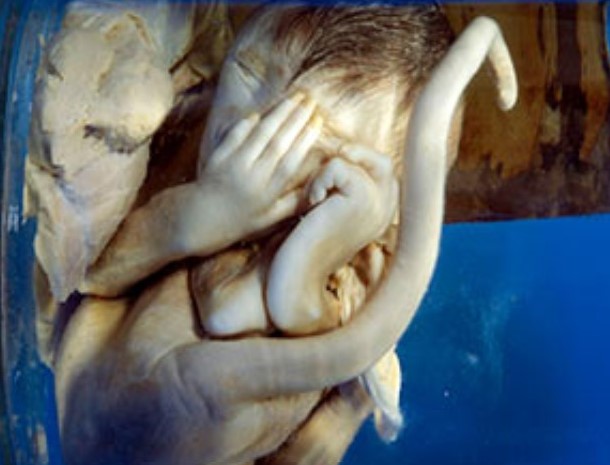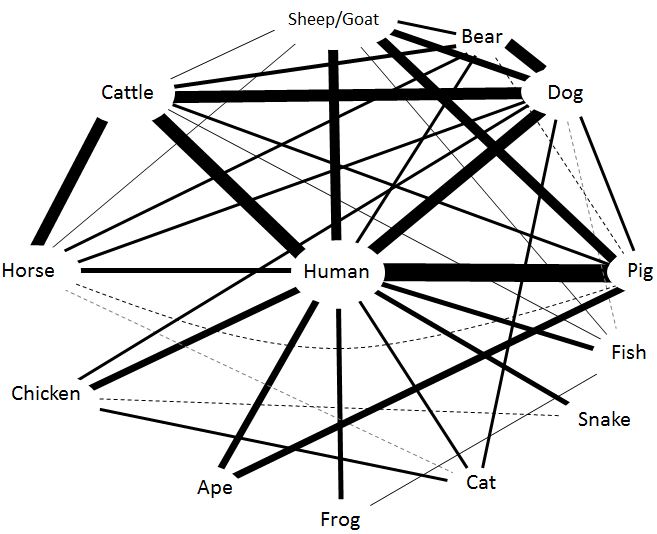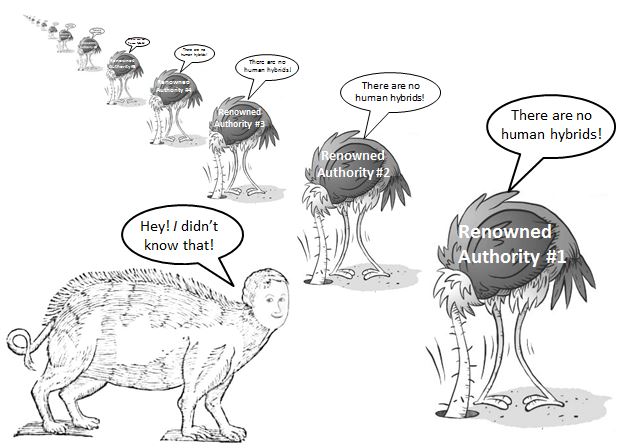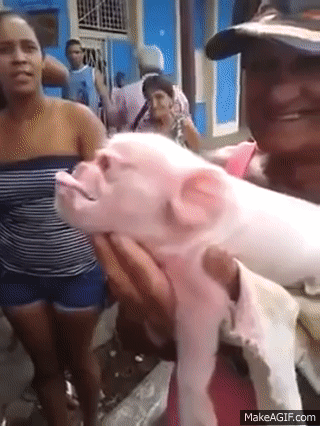 Specimen in the Museum Vrolik, Amsterdam.
Specimen in the Museum Vrolik, Amsterdam.Human-animal Hybrids
Family Hominidae
Mammalian Hybrids
|
For men have, in fact, attempted to consort with goats and sows and mares, and women have gone mad with lust for male beasts. From such unions your Minotaurs and Aegipans, and, I suppose, your Sphinxes and Centaurs have arisen.
—Plutarch, Bruta animalia ratione uti, 7
|
Many people are convinced that human-animal hybrids, that is, hybrids produced by humans mating with non-human animals, do not exist, and that they cannot exist. But it’s a head-in-the-sand mentality, given that there is actually a huge amount of evidence to the contrary (multiple eyewitness reports, videos, specimens, etc.). Perhaps it’s just that many people feel more comfortable denying the very possibility of such things than they do discussing the evidence. Obviously, the manner in which such things would come into being would involve acts violating longstanding cultural and ethical taboos, something that many people simply do not wish to discuss. And yet, such matters have great biological significance.
 Above: A diagram summarizing the best documented human-animal crosses. Lines attach pairs of organisms that have been reported to hybridize. The weight of the lines is approximately proportional to the number and quality of the reports documenting the occurrence of each particular cross. Documentation for all of the human-animal crosses indicated in this diagram—as well as other, more obscure and less well documented crosses involving human beings—can be accessed from the links in the list at right below. Other crosses indicated in the diagram, but not involving humans, can be accessed from links on a separate page.
Above: A diagram summarizing the best documented human-animal crosses. Lines attach pairs of organisms that have been reported to hybridize. The weight of the lines is approximately proportional to the number and quality of the reports documenting the occurrence of each particular cross. Documentation for all of the human-animal crosses indicated in this diagram—as well as other, more obscure and less well documented crosses involving human beings—can be accessed from the links in the list at right below. Other crosses indicated in the diagram, but not involving humans, can be accessed from links on a separate page.Human-animal hybrids:
Reliability rankings are based on the number and quality of the reports documenting each cross, not the perceived similarity of the parents.Human × Pig
Reports | Videos | Pix | Early
Human × Cow
Reports | Japan | Asia | Myth
Human × Goat or Sheep Reports | Today | Early | Art
Human × Chicken
Friderici | Fischer | Reports
Human × Horse
Modern Era | Antiquity
If you want to learn more about human hybrids, click on the links listed at right. As indicated by the reliability arrow, the various types of human-animal hybrids in the list occupy a continuum between fact and myth. Some, such as pig × human or cow × human are quite well documented. Others, at the other end of the spectrum, such as turtle × human and human × seal can perhaps best be interpreted as myth.
Wikipedia states the following:
The Kinsey reports rated the percentage of people who had sexual interaction with animals at some point in their lives as 8% for men and 3.6% for women, and claimed it was 40–50% in people living near farms [Laws and O'Donohue 2008, p. 391], but some later writers dispute the figures, because the study lacked a random sample in that it included a disproportionate number of prisoners, causing sampling bias. Martin Duberman has written that it is difficult to get a random sample in sexual research, and that even when Paul Gebhard, Kinsey's research successor, removed prison samples from the figures, he found the figures were not significantly changed.
By 1974, the farm population in the USA had declined by 80 percent compared with 1940, reducing the opportunity to live with animals; Hunt's 1974 study suggests that these demographic changes led to a significant change in reported occurrences of bestiality. The percentage of males who reported sexual interactions with animals in 1974 was 4.9% (1948: 8.3%), and in females in 1974 was 1.9% (1953: 3.6%). Miletski [1999] believes this is not due to a reduction in interest but merely a reduction in opportunity.

|
|
When the gods had overcome the giants, Earth, still more enraged, had intercourse with Tartarus and brought forth Typhon in Cilicia, a hybrid between man and beast.
—Apollodorus, The Library, 1.6
|
